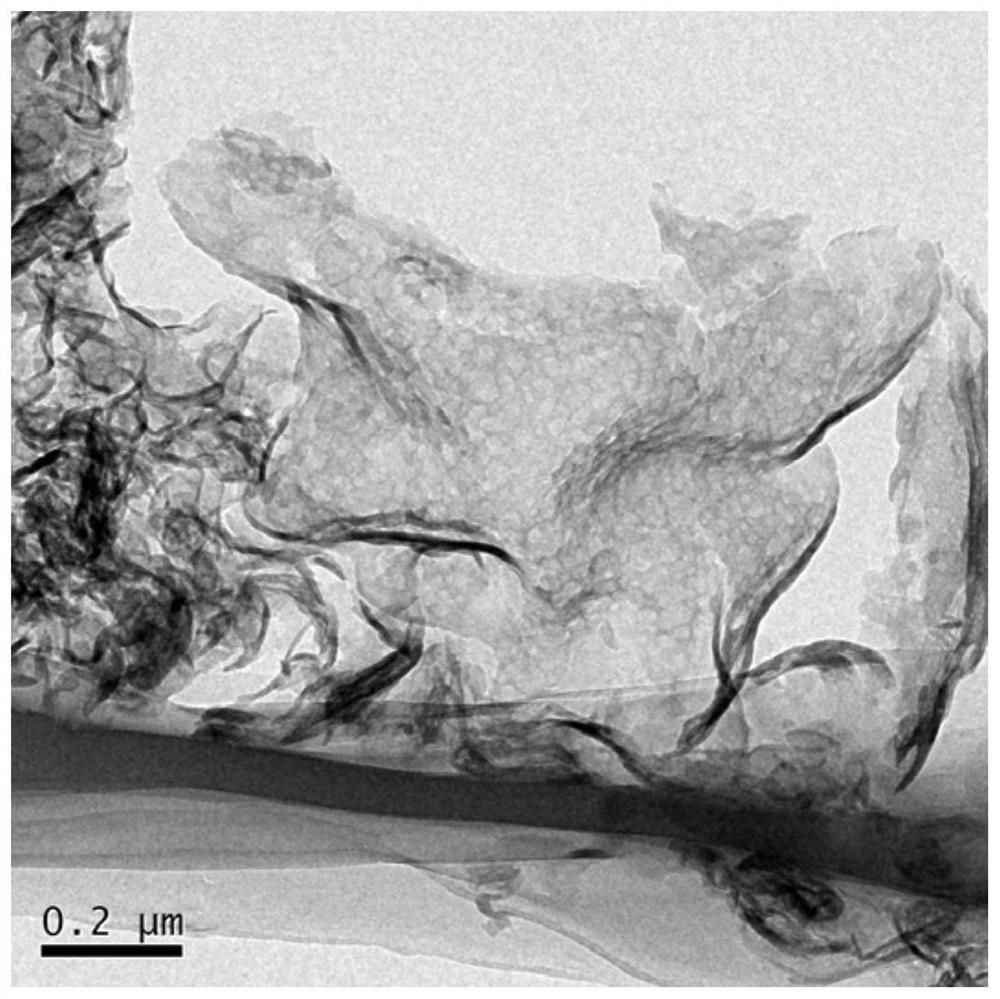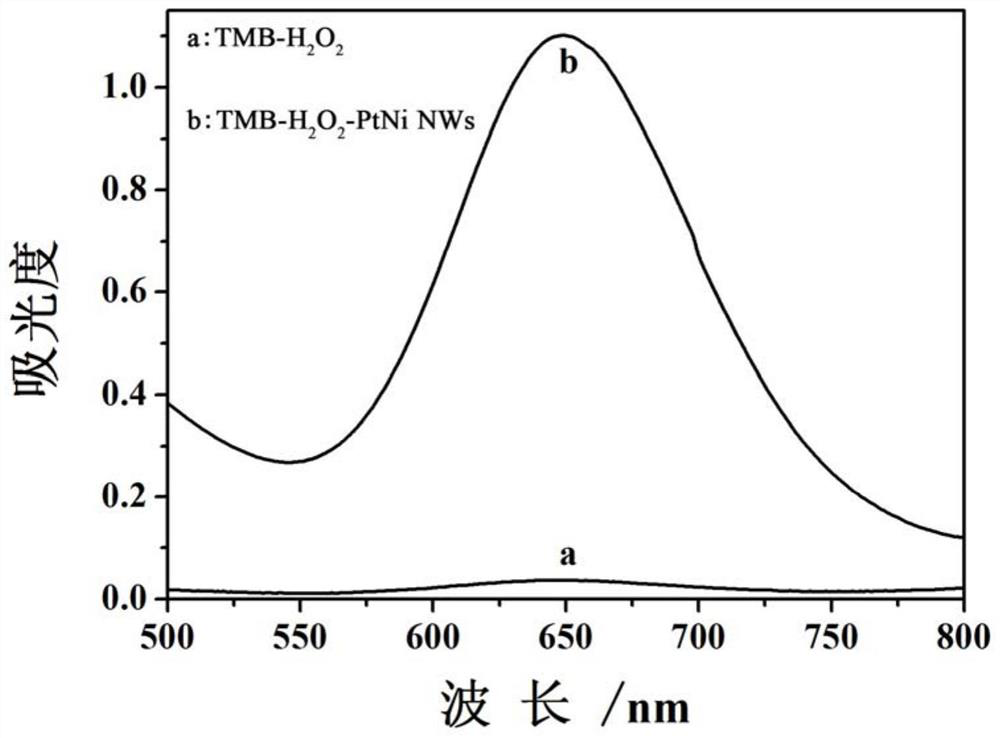Photoelectrochemical aptasensor based on nanozyme signal amplification and its preparation method and application
An aptamer sensor and photoelectrochemical technology, applied in the field of biosensors, can solve problems such as poor accuracy and specificity, threat to human health, and complex instruments and equipment, and achieve high specificity, excellent photoelectric conversion efficiency, and good dispersion performance. Effect
- Summary
- Abstract
- Description
- Claims
- Application Information
AI Technical Summary
Problems solved by technology
Method used
Image
Examples
Embodiment 1
[0058] A photoelectrochemical aptasensor based on nanozyme signal amplification of the present invention, comprising a conductive glass electrode used as a working electrode in a three-electrode system, and the reaction end surface of the conductive glass electrode is modified with benzene ring-doped carbon nitride nanosheets , the benzene ring doped carbon nitride nanosheet surface is covalently cross-linked with a specific double-stranded DNA recognition probe, the double-stranded DNA recognition probe is combined with a PtNi nanozyme signal probe, and the PtNi nanozyme signal probe is mainly composed of PtNi nano The wire is hybridized with streptavidin (it can also be considered to be mainly composed of PtNi nanowires hybridized with streptavidin). Among them, the specific double-stranded DNA recognition probe is used to identify and capture the pollutants to be tested, and it can also specifically capture the PtNi nanozyme signal probe, which is used to induce the formatio...
Embodiment 2
[0087] An application of the photoelectrochemical aptamer sensor based on nanozyme signal amplification of the present invention in the detection of antibiotics. In this example, the photoelectrochemical aptamer sensor based on nanozyme signal amplification prepared in Example 1 is used, and the antibiotic is specifically For chloramphenicol, the nucleic acid aptamer in the photoelectrochemical aptasensor has specific recognition and capture functions for chloramphenicol molecules.
[0088] The application process is as follows:
[0089] (a) Add different concentrations of chloramphenicol solution dropwise to the reaction end surface of the conductive glass electrode in the photoelectrochemical aptasensor based on nanozyme signal amplification, and react for 40min to make the specificity on the photoelectrochemical aptamer sensor The aptamer specifically recognizes and captures the chloramphenicol molecule, and then washes the modified electrode with Tris-Hcl buffer solution. ...
Embodiment 3
[0100] Evaluate the detection accuracy of the photoelectrochemical aptamer sensor based on nanozyme signal amplification in Example 1, and use the photoelectrochemical aptamer sensor for target detection in actual samples using the standard addition method (refer to Example 2 for the assay method) , for recovery experiments.
[0101] (1) The photoelectrochemical aptamer sensor prepared in Example 1 was used to detect the concentration of chloramphenicol in Xiangjiang water and milk respectively. The specific steps are: after pretreatment of different samples such as filtration, take the supernatant and use Tris-Hcl The buffer solution was adjusted to pH 7.4. The concentration of the target substance in the sample (containing chloramphenicol) is with reference to Table 1, and finally the photoelectrochemical aptasensor of Example 1 is used to detect chloramphenicol in the solution to be tested according to the method of Example 2, and the measurement results are listed in Table...
PUM
| Property | Measurement | Unit |
|---|---|---|
| diameter | aaaaa | aaaaa |
| concentration | aaaaa | aaaaa |
| diameter | aaaaa | aaaaa |
Abstract
Description
Claims
Application Information
 Login to View More
Login to View More - R&D
- Intellectual Property
- Life Sciences
- Materials
- Tech Scout
- Unparalleled Data Quality
- Higher Quality Content
- 60% Fewer Hallucinations
Browse by: Latest US Patents, China's latest patents, Technical Efficacy Thesaurus, Application Domain, Technology Topic, Popular Technical Reports.
© 2025 PatSnap. All rights reserved.Legal|Privacy policy|Modern Slavery Act Transparency Statement|Sitemap|About US| Contact US: help@patsnap.com



